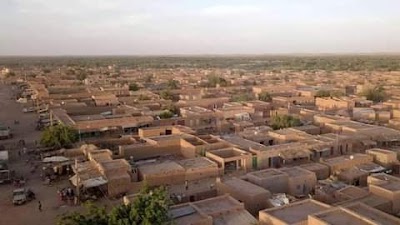Gao Ancient City (مدينة غاو القديمة)
Overview
Introduction to Gao Ancient City
Gao Ancient City, known as مدينة غاو القديمة in Arabic, is a captivating historical site located in the Ménaka Region of Mali, along the banks of the Niger River. This ancient city was once a thriving center of trade and culture in the Sahara, serving as a critical hub for the trans-Saharan trade routes. Travelers seeking to immerse themselves in Mali's rich history will find Gao an enchanting destination filled with stories of empires, merchants, and explorers.
Historical Significance
Gao's history stretches back over a thousand years, and it was the capital of the Songhai Empire during its zenith in the 15th century. This empire was one of the largest and most powerful in West Africa, encompassing vast territories and influencing trade, culture, and religion across the region. As you wander through the ancient ruins, you will encounter remnants of this glorious past, including the famed tomb of Askia Muhammad, the revered emperor who unified the empire and promoted the spread of Islam. The tomb, a UNESCO World Heritage site, is an impressive structure, showcasing the architectural prowess of the time and providing insight into the spiritual life of the people.
Exploring the Ruins
Visitors to Gao will be captivated by the sprawling ruins that dot the landscape. The most notable site is the ancient mosque, built from sun-baked clay, which stands as a testament to the architectural ingenuity of the era. The intricate designs and towering minarets reflect the Islamic influence that permeated the region. As you explore, take the time to chat with local guides, who can share fascinating stories about the city's past and its significance in the broader narrative of West African history.
Local Culture and Traditions
Gao is not just a relic of the past; it is a vibrant community that continues to thrive with its rich cultural heritage. The local population, predominantly composed of the Songhai people, is known for their warm hospitality and deep sense of tradition. Travelers can engage with local artisans who create beautiful crafts, including textiles, pottery, and jewelry. Participating in traditional music and dance performances is also an unforgettable experience, as these art forms are integral to the community's identity and storytelling.
Practical Information for Travelers
When planning your visit to Gao Ancient City, it is essential to consider the best time to go. The ideal months are from November to February when the weather is cooler and more comfortable for exploration. While the city has basic accommodations, it is advisable to book in advance, especially during peak travel seasons. Transportation options include local taxis and public transport, but be prepared for a more rugged travel experience, reflective of the region's charm.
Conclusion
Gao Ancient City is a treasure trove of history waiting to be discovered. With its rich cultural tapestry, stunning architecture, and warm local community, it offers an enriching experience for every traveler. By choosing to visit this ancient city, you not only witness the remnants of a powerful empire but also engage with the living history of Mali. So pack your bags, prepare your camera, and get ready for an adventure into the heart of one of West Africa's most fascinating destinations!




